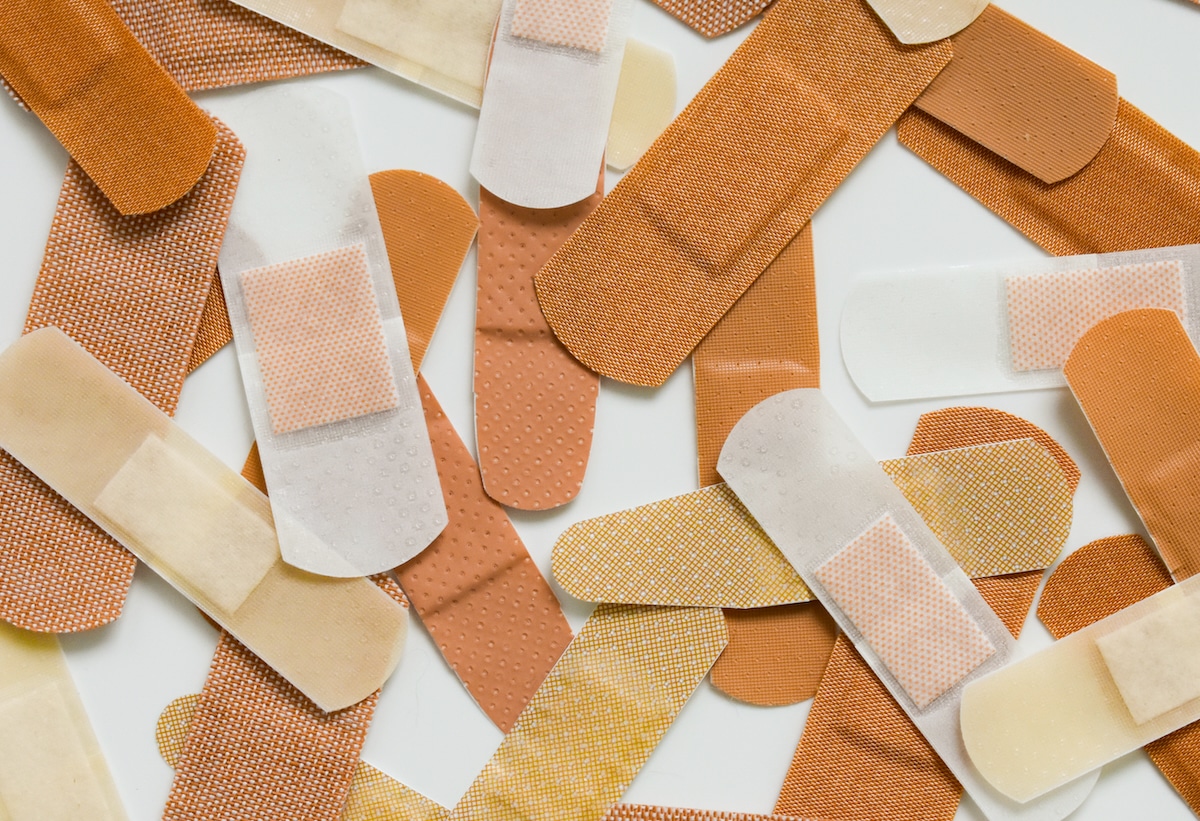Ecowatch
Major Bandage Brands in the U.S. Contain PFAS, Study Finds

A laboratory tested 40 different types of bandages for PFAS. Dena Hurlebaus / iStock / Getty Images Plus

Why you can trust us
Founded in 2005 as an Ohio-based environmental newspaper, EcoWatch is a digital platform dedicated to publishing quality, science-based content on environmental issues, causes, and solutions.
In a new test commissioned by the Mamavation consumer activist website, results show the presence of per- and polyfluoroalkyl substances (PFAS) in a majority of bandage brands tested.
Mamavation tapped an EPA-certified laboratory to test 40 different types of bandages from 18 brands, including top brands like Band-Aid, CVS, Curad and Walmart. Most of the bandages, 65%, showed indications of PFAS. Similarly, 63% of the tested bandages that were marketed to people with black or brown skin had indicators of PFAS.
The test identified organic fluorine at an amount over 10 parts per million (ppm) as an indicator of PFAS. Leah Segedie, creator of Mamavation, explained that organic fluorine is considered a PFAS indicator because PFAS chemicals are made up of carbon-based compounds containing fluorine. In the tests, the amounts of organic fluorine ranged from 11 ppm to 328 ppm.
“Because bandages are placed upon open wounds, it’s troubling to learn that they may be also exposing children and adults to PFAS,” Linda Birnbaum, scientific reviewer of the testing and Scientist Emeritus and Former Director of the National Institute of Environmental Health Sciences and National Toxicology Program, said in a statement.
PFAS, also known as forever chemicals because of their inability to break down in the environment, may be used in bandages for their waterproofing or water-resistant properties. In Mamavation’s tests, they weren’t able to separate the adhesive part of a bandage from the rest of the bandage materials, but there were higher indicators of PFAS specifically within the absorbent pads and the adhesive backing on bandages.
PFAS in the absorbent pads of the bandages could be used to help prevent blood or other bodily fluid from soaking through the pad and the outer material of bandages, The Guardian reported.
“It is discouraging to find yet another important product space, bandaids or bandages, containing PFAS compounds where transfers into users are conceivable,” Terrence Collins, scientific reviewer for the testing and the Teresa Heinz Professor of Green Chemistry and director of the Institute for Green Sciences at Carnegie Mellon University, said in a statement. “PFAS compounds deserve the ‘forever chemicals’ name, such that when PFAS-containing bandaids and bandages are discarded post-use, the final resting places will be contaminated into the indefinite future.”
While several of the bandages tested detected over 100 ppm of organic fluorine, the Mamavation team reported nine types of bandages, only one of which was marketed to people of color, as “better” bandage options with less than 100 ppm of organic fluorine. Fourteen of the tested brands, including six marketed to people of color, were considered the “best” bandage options, with less than 10 ppm.
“It’s obvious from the data that PFAS are not needed for wound care, so it’s important that the industry remove their presence to protect the public from PFAS and opt instead for PFAS-free materials,” Birnbaum said.
Subscribe to get exclusive updates in our daily newsletter!
By signing up, you agree to the Terms of Use and Privacy Policy & to receive electronic communications from EcoWatch Media Group, which may include marketing promotions, advertisements and sponsored content.
Source
Disclaimer: No copyright infringement intended. All rights and credits reserved to respective owner(s).












